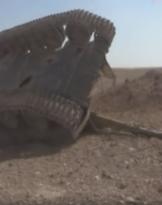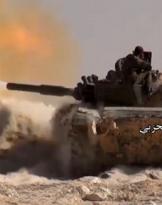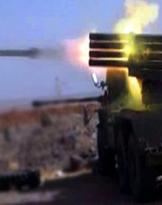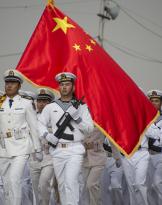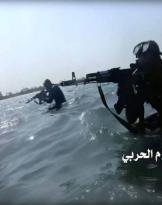War is also fought with information, you know. Many things are said, others not, depending on the victim and the executioner. As we write, the massacre of Aqarib, north of Hama, is confirmed by local Syrian sources. On May 17, Islamic State militiamen reportedly launched the most massive counter-offensive of 2017 against government posts in the northwestern sector of Syria. After a partial retreat, the National Defense Forces (territorial units trained by Iran) would regain control of the lost villages. During the escape, ISIS militants allegedly massacred dozens of civilians (the reference video shows the bodies of women and children and is not publishable by Online Defense). No mention of it, except in some Arab publications of Shiite orientation.
Partial or diverted information affects all the updates in progress from the Syrian theater. However, a general outline of the scenario seems visible. In view of a dissolution of the Islamic State before the end of the 2017, everything seems to go in the direction of a general race for final victory, with dormant actors suddenly reinvigorated.
 As announced by rumors during the Elysée campaign, theOpération Chammal. The French airplanes returned to the charge against ISIS in Iraq and Syria (80 reported from 10 to the 16 in May between Raqqa in Syria and Ramadi in Iraq). The Western coalition therefore seems to be starting up again after a few weeks of torpor. However, the real focal point seems to be that which involves the territory between the Euphrates and the Syro-Iraqi border.
As announced by rumors during the Elysée campaign, theOpération Chammal. The French airplanes returned to the charge against ISIS in Iraq and Syria (80 reported from 10 to the 16 in May between Raqqa in Syria and Ramadi in Iraq). The Western coalition therefore seems to be starting up again after a few weeks of torpor. However, the real focal point seems to be that which involves the territory between the Euphrates and the Syro-Iraqi border.
For some days on these pages we have been paying attention to the general retreat of the Caliphate terrorists, driven from the north by the Arab-Kurdish SDF militias, from the west by the army of Assad and from the south by Iraqi troops. The territory of ISIS is progressively reduced, but the point is to understand who will take its place. The Syrian regulars, aided by special forces and Russian fighters, advance slowly from Palmyra to the east and southeast, aiming to free the garrison of Deir Ezzor besieged for years, but at the same time intending to reach the border posts between Syria and Iraq and between Syria and Jordan. Here the game is played.
From around 24 hours (18 May), in the Governorate of Suwaida, not far from the Jordanian border, clashes are underway between Syrian armored units and Jaysh Assoud al Sharqiya, a militia integrated into the Free Syrian Army and armed by the United States. The battle is part of the biggest battle that concerns the whole area near the Golan (Dar'a Governorate) and the Euphrates, along an axis almost 600 km long. As the Caliphate terrorists retreat, other rebel groups (Islamists and non-Islamists) are fed by the West to prevent Syrian troops from resuming all the lost territory between the 2011 and the 2015. From this point of view also the battle for the liberation of Raqqa and the raids of the US-led Coalition against ISIS in the Deir Ezzor area, take on a different meaning.
 As reported today (18 May) by La Stampa, US intelligence would be convinced of the existence of chemical weapons in ISIS deposits south of Deir Ezzor. The "chemical pole" was born from a convergence of terrorists who are experts in the sector from the territories of Iraq and Syria still in the hands of Sunni fundamentalism. The news would be further proof of the great western interest (we mean with this, the US-led Coalition, nda ...) for the region of Deir Ezzor, ignored for years. Rich in oil, the area around the Syrian capital could be freed by Assad's troops by the summer, creating a major strategic problem for the West: the forces coming from Raqqa, close to falling, would remain cut off by an advance to the south (there would be no ISIS to fight ...). The assessment should be made in light of the latest updates coming from Iraq.
As reported today (18 May) by La Stampa, US intelligence would be convinced of the existence of chemical weapons in ISIS deposits south of Deir Ezzor. The "chemical pole" was born from a convergence of terrorists who are experts in the sector from the territories of Iraq and Syria still in the hands of Sunni fundamentalism. The news would be further proof of the great western interest (we mean with this, the US-led Coalition, nda ...) for the region of Deir Ezzor, ignored for years. Rich in oil, the area around the Syrian capital could be freed by Assad's troops by the summer, creating a major strategic problem for the West: the forces coming from Raqqa, close to falling, would remain cut off by an advance to the south (there would be no ISIS to fight ...). The assessment should be made in light of the latest updates coming from Iraq.
As the Islamic State shrinks, the most rapid troops to advance are the PMUs, the Shiite majority People's Mobilization Units. The Iraqi militia (speaking of 100.000 units) represents a structural component of the forces that fight ISIS in Iraq and at the same time is the spokesman of the majority of the Iraqi population, of Shiite faith.
Fruit of Iraqi Freedom and of the fall of Saddam (the great repressor of the Shiites), the PMUs represent an own goal for Western ambitions in the future of Syria once the war is over. The militias are about to check the border crossings between Iraq and Syria and do not hide their pro-Assad policy. The litmus test will be in the coming weeks, when we can expect the following scenario:

- will increase the pressure of the Coalition until the fall of Raqqa;
- the armed groups that form the Free Syrian Army will be further helped by the US to take positions in the territories abandoned by the Caliphate;
- if the pressure of the Syrian army increased towards the south, the entry of US-Jordanian troops massed beyond the Jordanian border is planned;
- both Coalition troops (Arab SDF and US special forces) and Syrian government troops assisted by the Russians will converge on Deir Ezzor.
The latter will be the decisive game. The alleged chemical weapons in the hands of terrorists in the south of the city could be one more reason for direct American (and allied) intervention along the entire course of the Euphrates. This would achieve the double objective of stopping the Syrians and blocking the advance towards the northwest of the Iraqi Shiite militiamen.
(photo: web / Ministère de la Défense / SANA)


